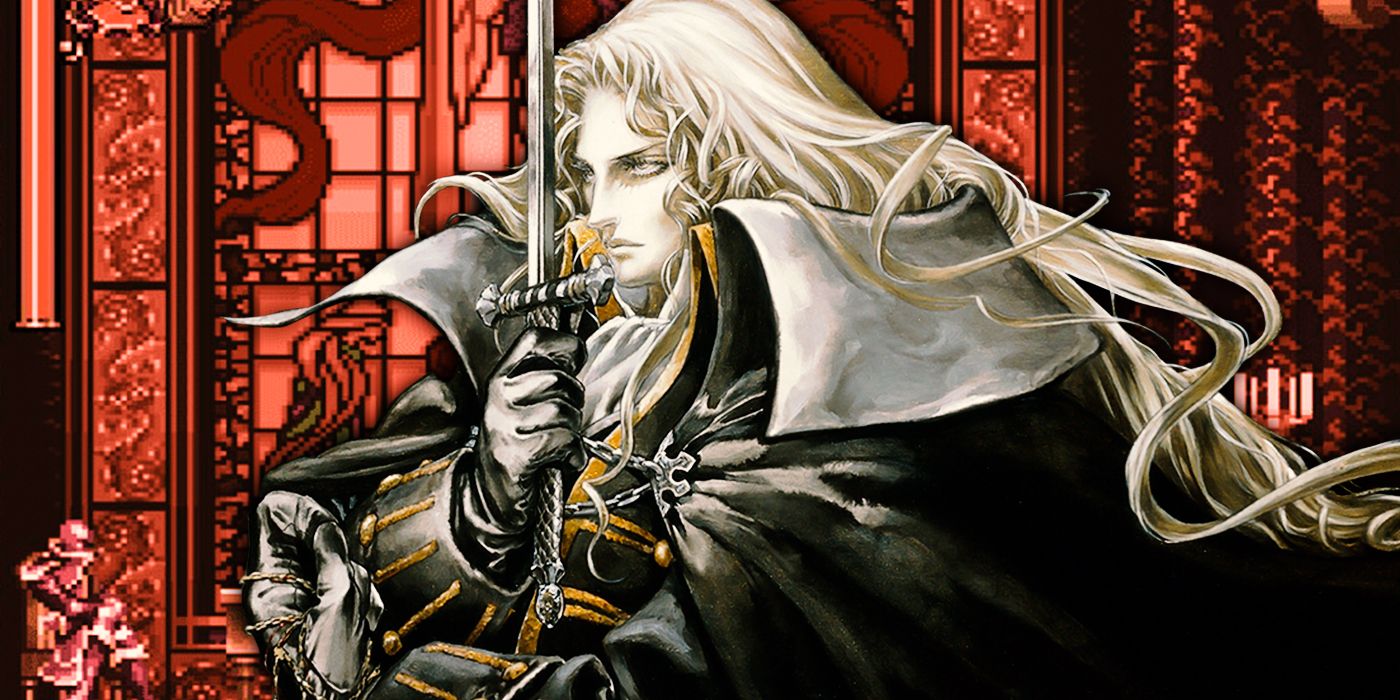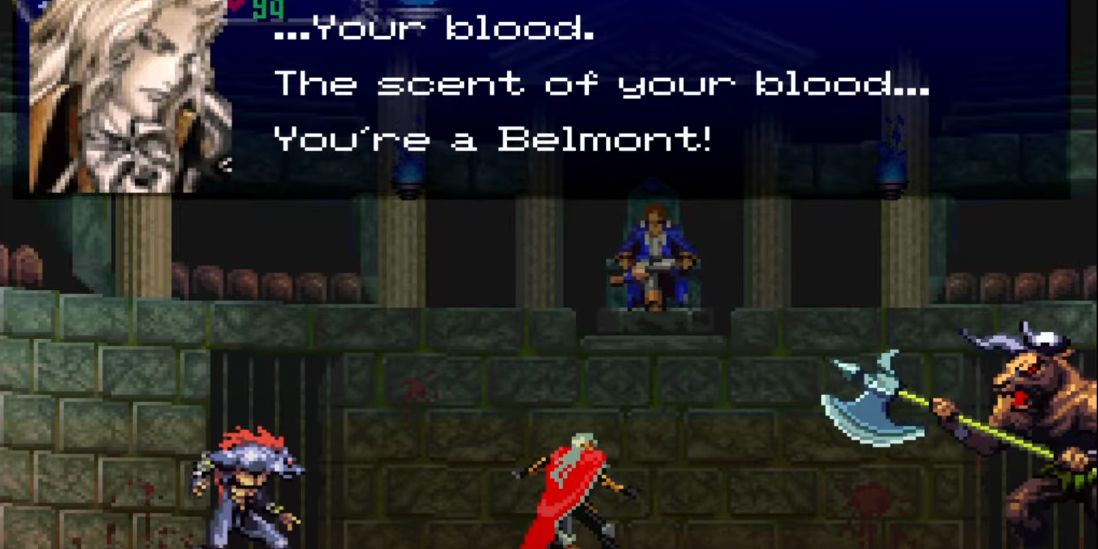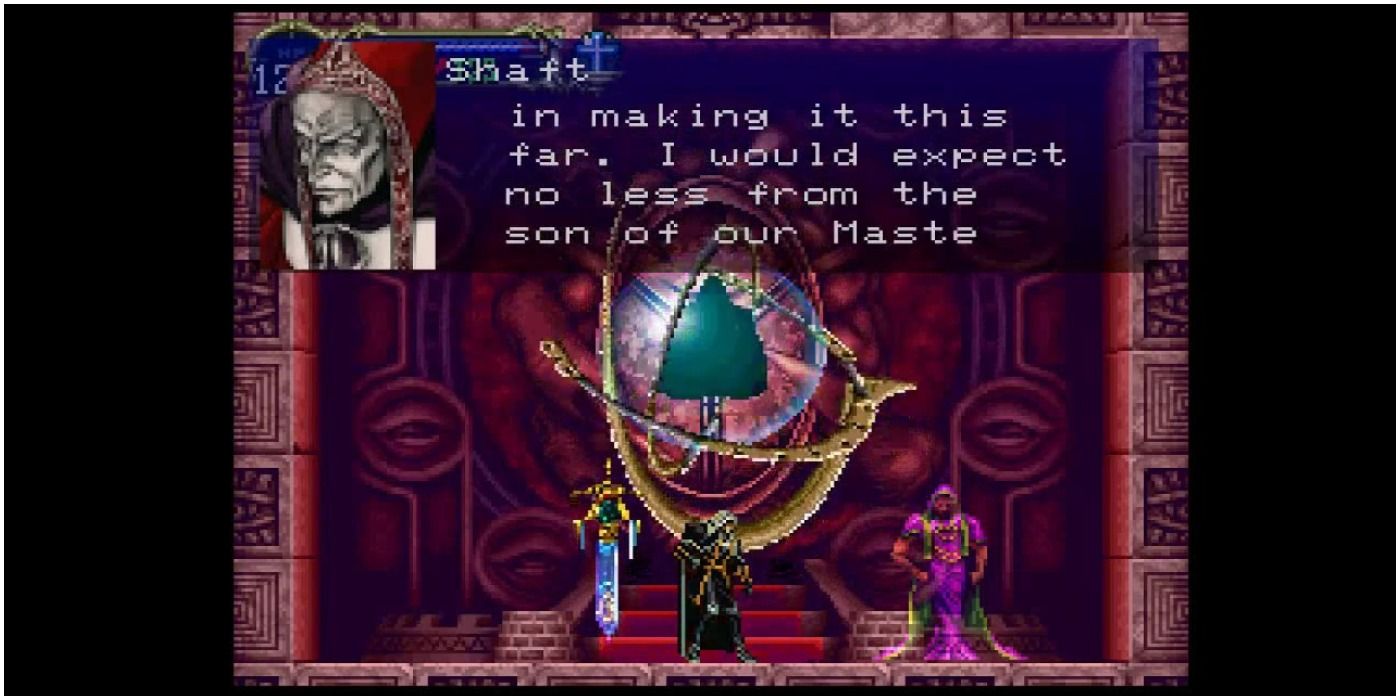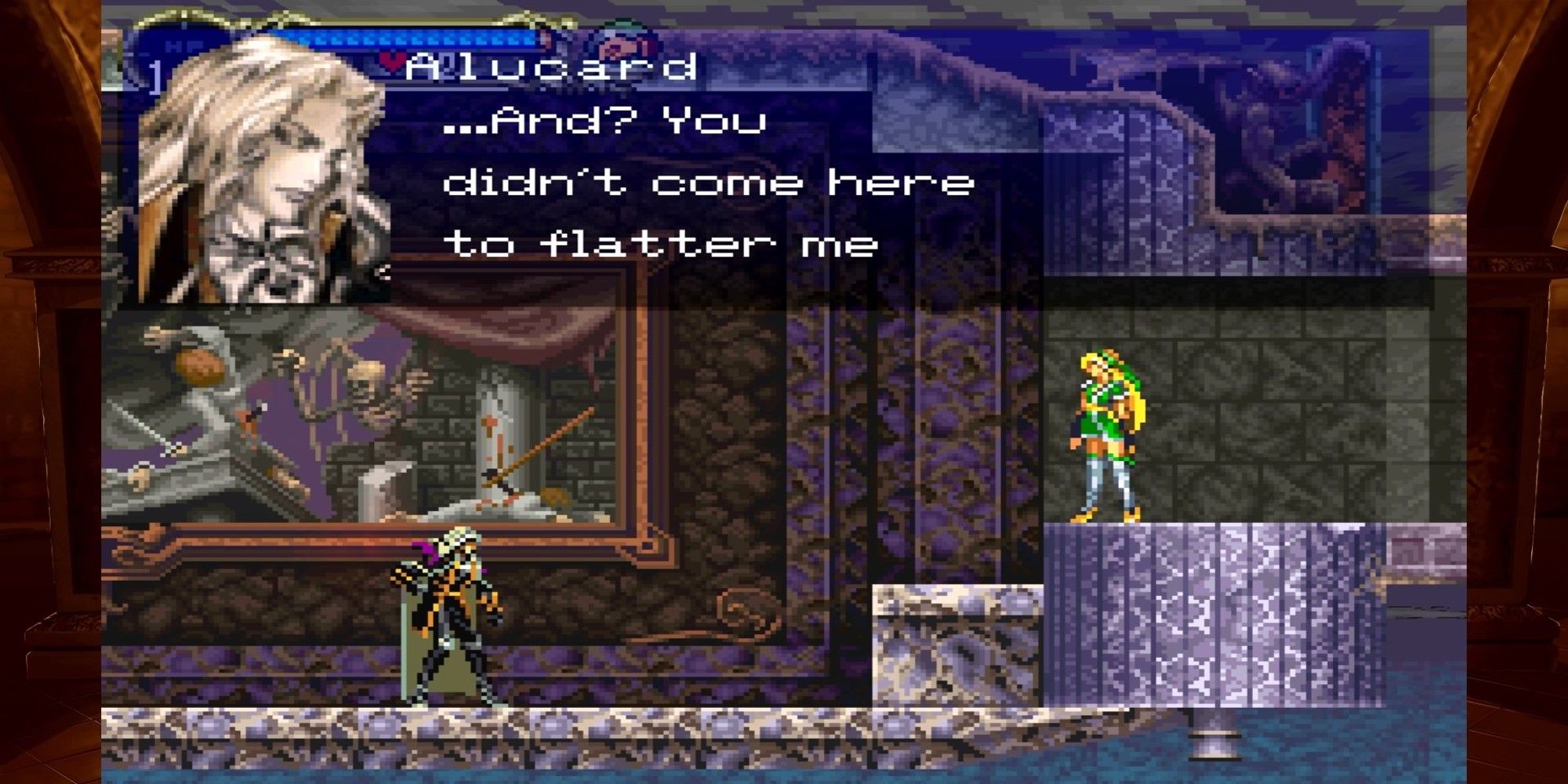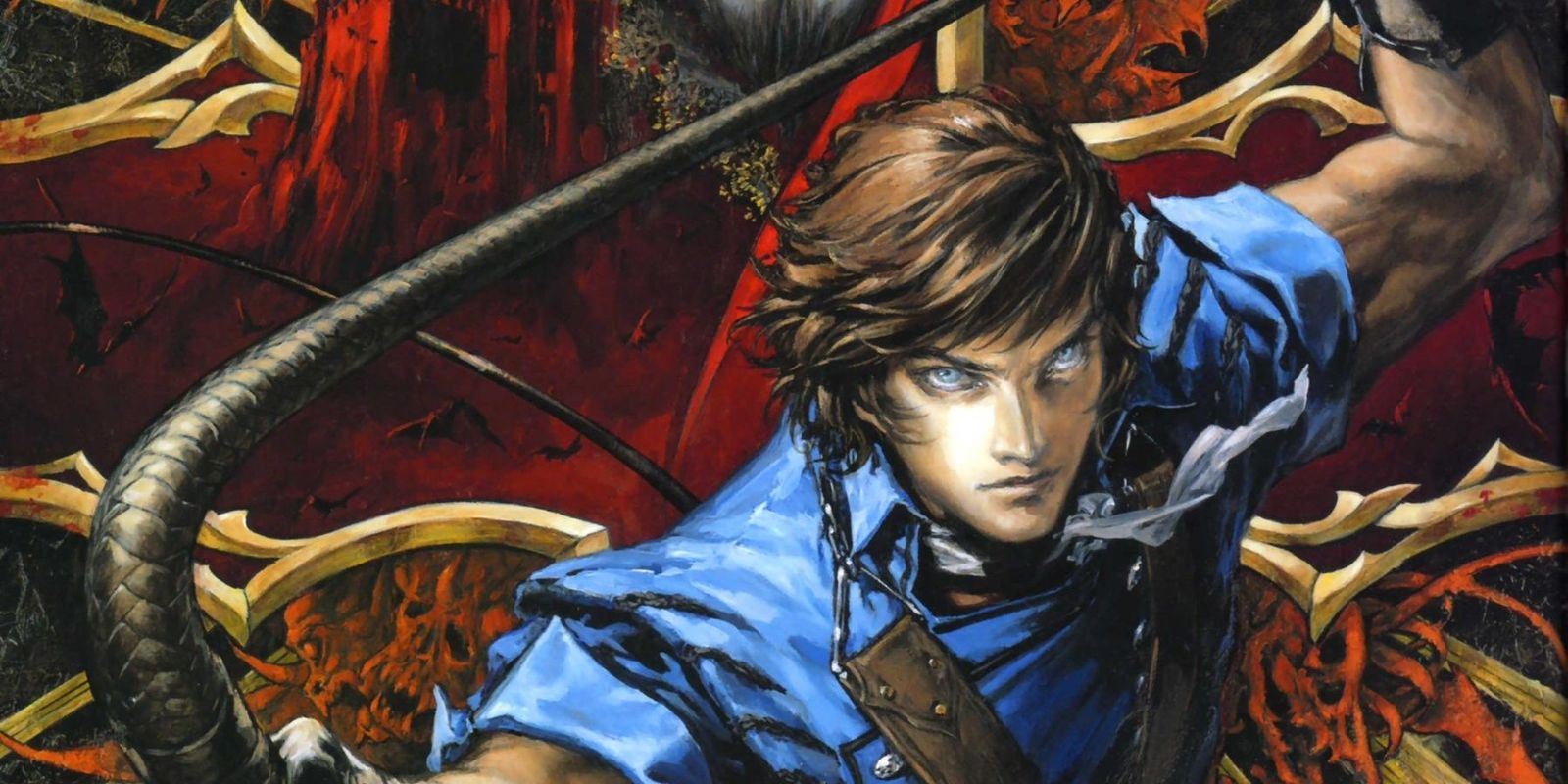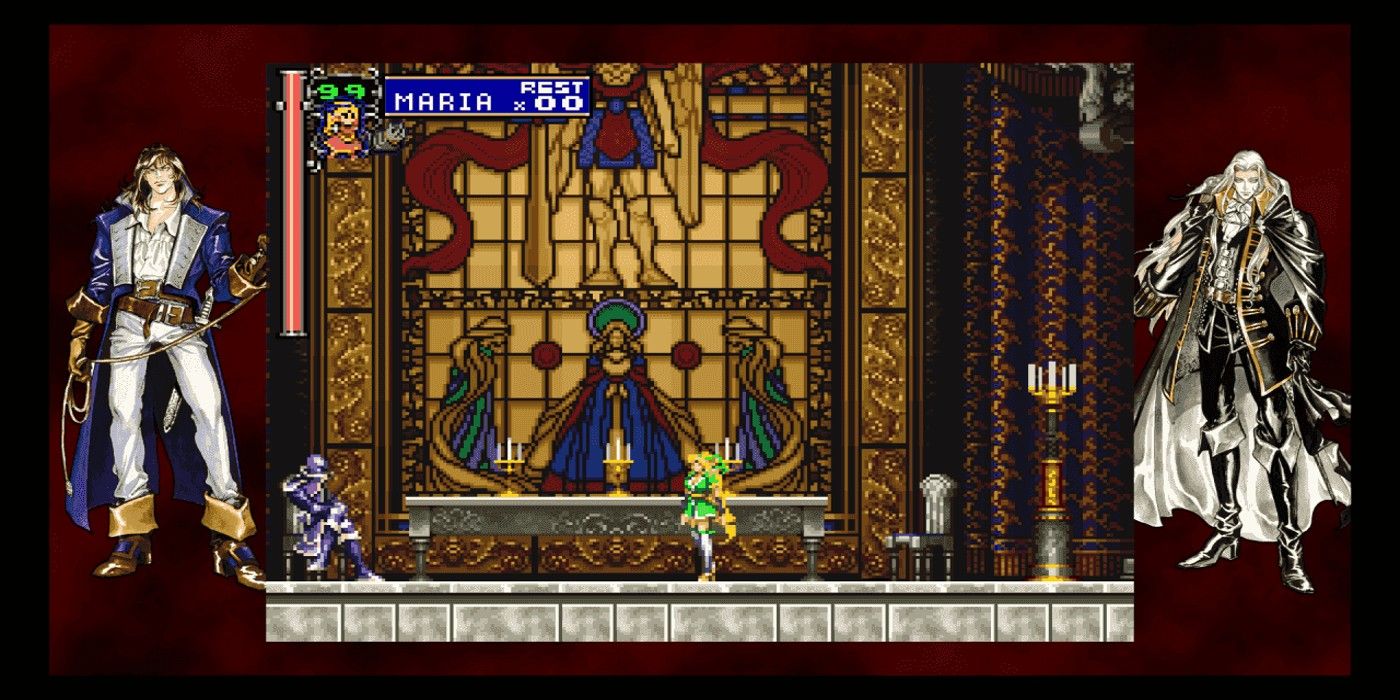One of the most celebrated Castlevania games of all time is 1997's Symphony of the Night. Originally released for the original PlayStation, Symphony of the Night has seen its own line of re-releases and remasters, including the Castlevania: Requiem collection for PlayStation 4. With an engrossing story that has Dracula's son Alucard explore his father's castle in the late 18th century to discover what happened to the Belmont clan, this epic story has multiple endings for players to see different possibilities from Alucard battling Dracula's legacy once again.
Here are all the possible endings in Symphony of the Night and how players can unlock achieve of them to a fuller picture behind the universally acclaimed video game.
Alucard's Bad Ending
In all versions of Alucard's story, he encounters a visibly corrupted Richter Belmont presiding over a gladiatorial arena within the heart of Dracula's castle, forcing Alucard to face off against fearsome monsters before retreating. Alucard gets the opportunity to battle against Richter personally in the castle's throne room and, if Alucard focuses on striking Richter directly or goes into the fight without having the Holy Glasses equipped, Alucard will kill Richter and leave the castle pondering what happened to corrupt the Belmont line.
To forego this bad ending, Alucard must acquire and equip the Gold and Silver Rings, with the former obtained after defeating the succubus in the castle's catacombs while the latter is found in the royal chapel. Equipping both rings while entering the castle's center, where the clocktower is located, will prompt Maria Renard to appear and give Alucard the Holy Glasses. Equipping the glasses during the fight with Richter reveals a magical orb hovering over the Belmont which Alucard should strike and destroy instead.
Alucard's Good Ending
Symphony of the Night's standard good ending occurs if Alucard successfully destroyed the magical orb controlling Richter instead of slaying the young vampire hunter. Dracula's dark priest Shaft will resurface and cause an inverted version of the castle to appear overhead, with a portal just beyond the throne room linking the two. Inside, Alucard faces even more formidable monsters while racing to prevent Shaft from resurrecting Dracula in the inverted castle's center.
To gain entry into the castle center, Alucard must acquire all the various pieces of his father's corpse from the bosses throughout the inverted castle. Afterwards, Alucard faces off against Shaft and imperfectly resurrected Dracula in back-to-back fights, destroying his father while reminding him that his mother Lisa truly loved him. In the aftermath, Alucard leaves for parts unknown while Maria decides to heed his advice and not pursue him, instead rejoining a recovering Richter.
Alucard's Best Ending
Symphony of the Night has a better, true ending for Alucard, obtainable only if players unlock the inverted castle by cleansing Richter instead of killing him and fully exploring both versions of the castle before defeating Shaft and Dracula as with the standard good ending. There is 200.6 percent total area to be credited on Symphony of the Night's map, with at least 196 percent needed to be filled into the map to achieve the true ending.
The true ending plays out much like the standard good ending, with the key exception that Richter encourages Maria to pursue Alucard. The young woman follows Alucard on his wandering journey, ostensibly striking up a romance with him, though Alucard does not elaborate on what became of her when he resurfaces in the 21st century during Castlevania: Aria of Sorrow.
Richter's Ending
After beating Symphony of the Night, players can unlock a secret playthrough of the game by inputting Richter's name when creating a new save file. Armed with the legendary Vampire Killer whip and boasting the same combat style he possessed during Symphony of the Night's prologue, Richter must navigate both versions of Dracula's castle, packing quite a punch but more physically vulnerable than Alucard had been.
Richter's story comes to a close in the inverted castle's center, much like Alucard's good endings do, with a final battle against Shaft. Unlike Alucard, there is no battle against Dracula, with the playthrough potentially presenting a possible version of how Richter was corrupted by the dark wizard before Alucard's went in the castle after him.
Maria's Ending
While initially planned as a playable character in the original Symphony of the Night before being cut from the game due to time constraints, Maria was restored as a playable character in the Sega Saturn port (subtitled Nocturne of Moonlight) and remasters of Symphony of the Night included in Castlevania: The Dracula X Chronicles and Castlevania: Requiem. Now relying on hand-to-hand combat and magic instead of using animals to fight for her like in Rondo of Blood, Maria has her own playthrough.
Similar to Richter, Maria is unlocked by inputting her name as a new save file after beating the game as Alucard. Like Richter's playthrough, she also navigates both versions of Dracula's castle before coming to a close with a final battle against Shaft in the inverted castle's center. Similar to Alucard's good ending, Maria's playthrough ends with Dracula's castle crumbling into the sea (though Dracula himself isn't fought), and the game's does not elaborate on the story as Alucard's does.

